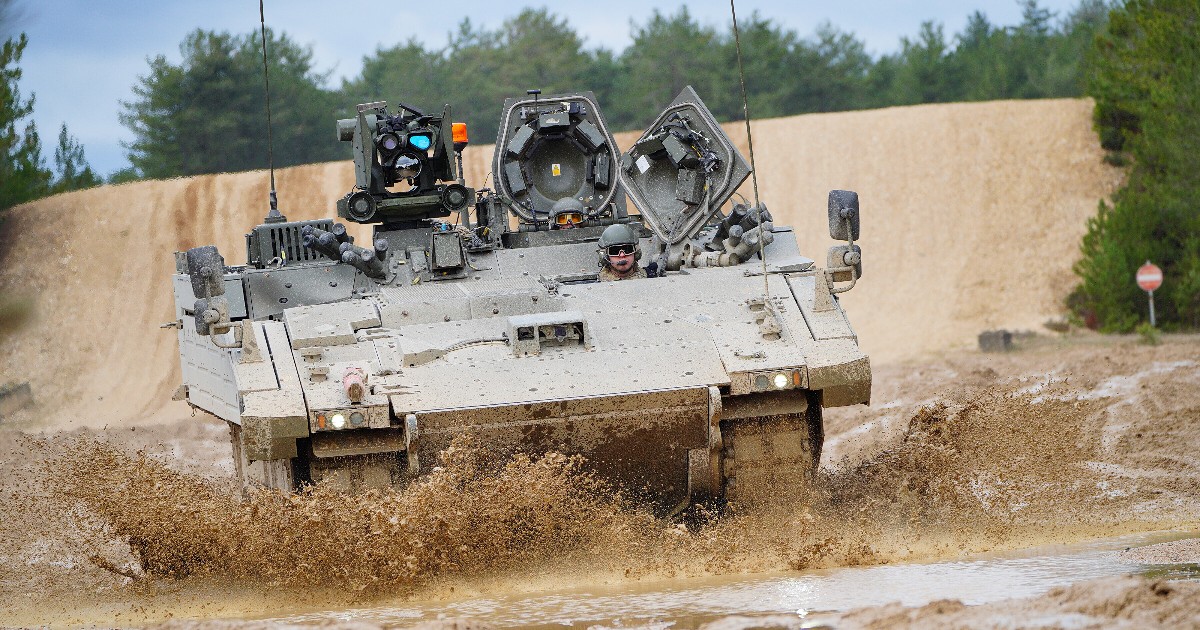The announcement of London it has arrived, even if in an informal way. As stated by the Baroness Annabel GoldieDeputy Defense Minister in the Tory government of Rishi Sunakall’Ukrainealong with a squadron of tanks MBT Challenger 2the relative ammunition will be sent APFSDS (Armour-Piercing Fin-Stabilized Discarding Sabot) with kinetic indenter to depleted uranium. Why Mosca is he so afraid of this type of bullets and why hasn’t he used them until now, since he has them in large quantities? First of all, it should be remembered that the Americans have made extensive use of it both in BALKANS (with the ammunition installed on USAF A-10 tank destroyers), both in Iraq. In the latter country, the Scientific Committee SIGN (Study of Genotoxic Impact in Military Units), in its report, stated that no less than 300 tons of depleted uranium munitions were used in the gulf war of 1991. The other question is why the UK decides to use ammunition that put your health at risk of the military and the population present in the places of employment. The motivations, rather than in the military field, must be sought in the economic one: to produce depleted uranium bullets It costs lessespecially for those countries, such as the Great Britainwhich have large quantities of waste coming from nuclear power plants.
However, it must be explained why this type of ammunition is used in anti-tank ammunition. Uranium has one density pari a 18.70 kg/dm³ is one fusion point relatively low, around 1,130 °C (for iron it is 1,530 °C). The tungsten, the other metal used in APFSDS indenters, has a density of 19.30 kg/dm³ and a melting point of over 3,000°C. It is a very fragile material, that’s why they are added nerofumo o graphite (which form tungsten carbide) in order to increase its resilience. However, this procedure lowers its density to 15 kg/dm³. In the manufacturing phase, once a fairly hard single-crystal alloy has been obtained, the following are followed three processes to process depleted uranium into kinetic penetrators for Western tank guns. First, a piercing core which weighs like that of tungsten carbide and has the same length. Since the uranium core has a higher specific gravity than tungsten carbide, its diameter will be smaller resulting in an increase in the piercing ability. Furthermore, weight being equal, the uranium indenter will have the same diameter as the tungsten carbide one but, being shorter, will have a more stable trajectory, both in flight and on impact. Finally, with the same weight, a compromise is sought between the first two points, in order to produce a balanced ammunition both from the point of view of flight stability and armor-piercing capabilities.
In training it was noted that the APFSDS kinetic penetrators fired from smoothbore guns at a certain point in the trajectory become unstable. The tungsten carbide penetrators begin to lose stability after 2,000 meters, while those with depleted uranium much later. During the first Gulf War, M-1A1 tanks could hit Iraqi T-72s while remaining out of range of their shots.
From this brief examination of the physical and ballistic characteristics of depleted uranium shells it would seem that their use, on the battlefield, is very advantageous, if we also consider the considerable quantities of depleted uranium which are produced every year as waste from nuclear power plants in the Usa It is in the United Kingdom. The problem with this type of bullet is the environmental contamination which cause, with all the consequences, in terms of health, for i military and for the civilian populations. In fact, following the high-speed impact against the armor or armor plating of a vehicle – but also on the ground – they develop very high temperatures releasing pulverized particles of uranium and other metals that remain suspended and can be transported by the wind, then deposited in the surrounding soils and polluting the aquifers.
On the other hand, the current tungsten carbide armor-piercing ammunition offers very respectable ballistic performance. The DM63A1 penetrators, produced by Rheinmetall, constitute one of the latest generation of 120mm APFSDS. Compared to previous shots, for example, they have a different launch charge that is not very sensitive to temperature variations. Thanks to this feature, the DM63A1 can be fired with great efficiency at temperatures between -46 °C and +71 °C, with a minimum variation of pressure in the combustion chamber, with significant benefits on internal ballistics and shot accuracy.
As far as drilling capabilities are concerned, the DM63A1 rounds are capable of drilling over 600 mm of homogeneous steel at a distance of 1,000 meters. In practice, they offer the same performance as a depleted uranium round, thus ensuring sufficient superiority over Russian tanks, even the most up-to-date ones, such as the T-90M, T-80BVM e T-72B3M. If the British intend, as it appears, to send Challenger 2 MBTs to support Ukrainian efforts against Russian troops, they could alternatively arm them with APFSDS ammunition with tungsten carbide penetrators, thus avoiding contaminating Ukrainian territory and inflicting local population further suffering. The reason why they decided not to do it is more to be researched in the economic sphere what a military man. As mentioned, the Kingdom, like the United States, has uranium waste from nuclear power plants which should be disposed of, with consequent costs. Expenses that they will not have to bear if the same material is reused to produce ammunition. Also, how said, the melting point of uranium is about three times lower than that of tungsten: it follows that the processing requires lower temperatures and, therefore, a lower energy expenditure.
